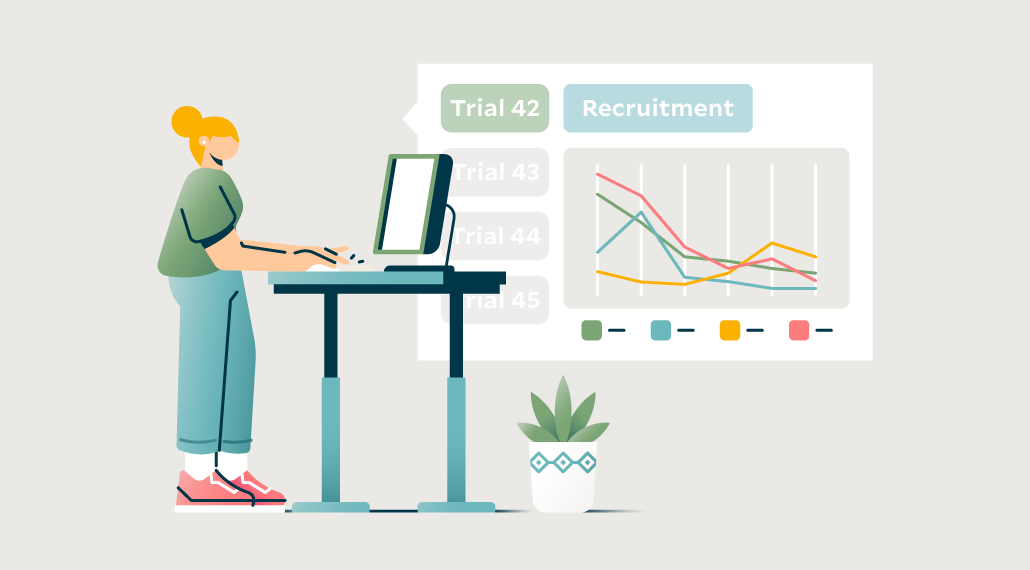August 7th, 2024
How does eSource Cut Clinical Trial Costs for Research Sites? Here Are 5 Ways.
By OneStudyTeam
.png)
The daily cost of operating a clinical trial at a research site can get steep. A lot of factors add up: the complexity of the trial, geographic location, type of therapeutic area, the specific procedures involved, staff salaries, administrative costs, patient recruitment, and more. eSource is once technology solution that can help site teams improve their operations.
How does eSource cut clinical trial costs for research sites?
When research sites adopt an eSource solution to bring electronic data capture into their workflows, they can cut clinical trial costs in several ways across staff resourcing and administrative costs. Here’s how:
- eSource can shorten study startup times.
- eSource can reduce monitoring corrections by 50%.
- eSource can reduce data capture time by 37%.
- eSource can shorten patient visit times by 25 minutes.
- eSource can reduce administrative hours, freeing staff up to focus on patient care and trial success.
(1) eSource can shorten study startup times.
A Tufts CSDD’s analysis showed that the average cost to conduct a trial each day, regardless of therapeutic area, is $40,000. Tufts also conducted a survey that indicated lengthy study startup time, averaging more than 36 weeks for new sites and 26 weeks for existing sites. Source template creation is one factor that can delay study startup – this process alone can take days. Additionally, if a protocol amendment is made after study startup, site staff spend even more time updating source templates, which impacts the overall trial timeline. With an eSource solution (like the one built into StudyTeam), sites can receive templates made for them per each specific protocol and protocol amendment, so they save valuable time and money. Study startup accelerates, and staff workload decreases.
(2) eSource can reduce monitoring corrections by 50%.
Because eSource forms are built to accurately align with specific study protocols and case report forms, this data-entry method improves data quality. Further, solutions like StudyTeam’s eSource functionality include built-in validation, with preset ranges in certain fields pinpointing keystroke errors. So by the time this data is reviewed by a clinical research associate, it should already be correct. That means site staff don’t have to revisit data-input tasks they’ve already completed and double their workload. When there are fewer discrepancies to address due to high-quality data, this also saves time for monitors. Seacoast Kidney & Hypertension Specialists saw this impact when they implemented StudyTeam’s eSource solution – they found they were able to reduce monitoring corrections by 50%.
(3) eSource can reduce data capture time by 37%.
One study analyzed the time spent completing forms for an OB/GYN registry with eSource compared to time spent using non-eSource methods. eSource methods reduced the overall average data capture time by 37%.
With eSource, you can program visits and visit activities per protocol into electronic forms (or a technology vendor can do this for you). This enables site staff to precisely follow the protocol during data capture – you click through the checklist for each patient visit, easily and legibly entering data into the form. This eliminates any lag between the patient visit and data recording. You can go right to your next patient visit or other task. Another benefit: Reducing personnel costs by freeing up staff to do more without going into overtime.
(4) eSource can shorten patient visit times by 25 minutes.
Direct data capture is also one way to make sure visits are as efficient as possible. When you use eSource to log source data during patient visits, you accommodate more patients in less time – while improving the quality of those visits. The key differentiator with eSource is that it eliminates the need to flip through physical binders of source data while engaging with the patient. Rather, you can rely on templates with checklists and alerts to ensure protocol adherence during the visit and enter data with a few quick clicks on the keyboard while focusing on one-on-one patient interaction.
In a 2023 CISCRP study, when patients were asked what most often causes them disruptions during an average study, 31% of participants said too much time is required. Faster visit times with eSource can improve this perception and the patient experience, to ultimately improve patient retention and cut trial costs. “We actually had patients comment about how much faster the visits seemed once we switched to eSource because we’re not flipping through papers,” said Ashlee Morris, lead clinical researcher at Seacoast Kidney.
With lower dropout rates, site staff are less likely to have to devote unexpected time, effort, and costs to recruiting additional patients.
(5) eSource can reduce administrative hours, freeing staff up to focus on patient care and trial success.
The combination of faster data capture, fewer monitoring corrections, and faster visit times can have a big impact on resourcing. So can the electronic simplification of documentation: eSource documents are inherently easier to retrieve, search, and review than paper documents.
The same study that analyzed the time spent completing forms for an OB/GYN registry with eSource reported that the impact on workflows meant one less full-time allotment of hours was needed, compared to workflows with non-eSource data-capture methods. In other words, eSource can free up a staff member to focus on other tasks that need attention, whether that’s financial management or patient recruitment.
What does that look like in terms of numbers? According to salary.com, the average salary for a clinical research coordinator in the U.S. is $35 an hour. That means you have more than $1,000 in personnel costs to devote to critical tasks each week.
Accelerate study timelines overall with eSource built into StudyTeam for Sites.
The cumulative effect of faster and better data collection, reduced monitoring corrections and resources needed, and shorter patient visit times is a decrease in overall time needed for sites to conduct a clinical trial. Shorter study duration means lower costs due to reduced staffing needs and lower administrative expenses. It also means faster reimbursement per task and milestone completion. Learn more about how your bottom line can benefit from StudyTeam for Sites’ eSource solution.
Related Posts

How Does a Trial Manager in Greece Improve Clinical Trial Operations with StudyTeam®?
Dimitris Tziogas, local trial manager at a biotechnology company in ...
Read More
How to Address Key Clinical Trial Challenges, According to Clinresco Centres in South Africa
There’s no single solution to overcoming a research site’s specific ...
Read More
3 Clinical Trial Billing Challenges Research Sites Solve with StudyTeam
Challenge 1: Complicated coverage analysis Challenge 2: Tedious budgeting ...
Read More

.png?width=64&name=OST%20Transparent%20(1).png)